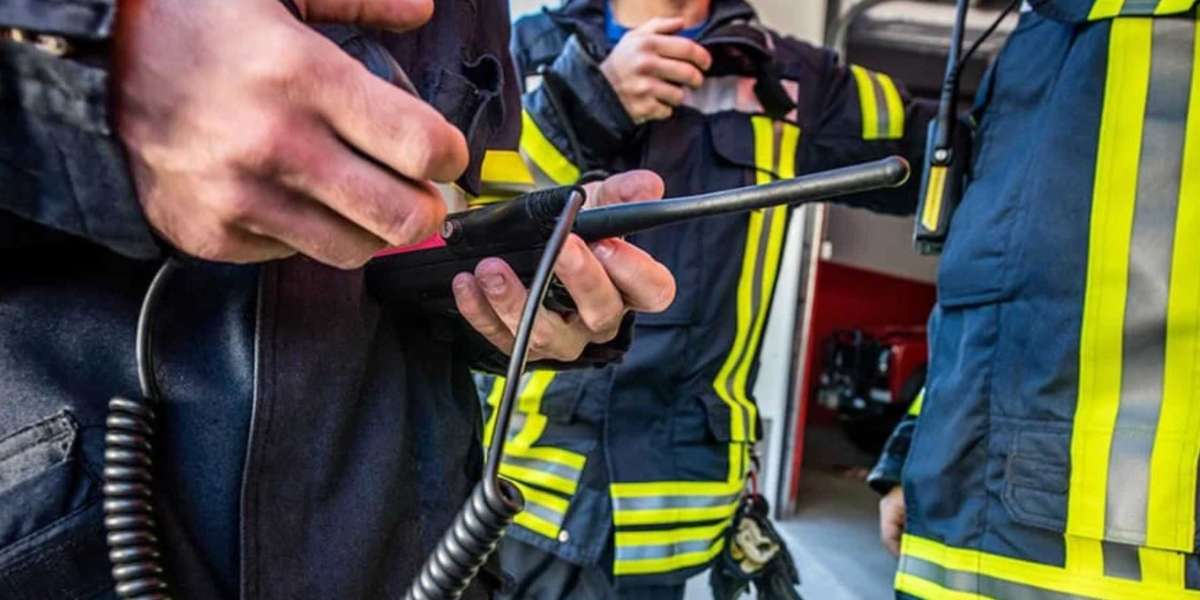Reliable emergency communication plays a crucial role in ensuring building safety and first responder efficiency. As technology evolves, maintaining constant signal performance inside large or complex buildings becomes more challenging. That’s where combining an ERRCS system with an antenna monitoring system becomes essential.
Together, these systems create a safety network that ensures communication lines stay open even during high-risk situations. Understanding how these components work together helps facility managers, engineers, and building owners improve safety protocols and meet code requirements.
What Is an ERRCS System?
An Emergency Responder Radio Communication System (ERRCS) supports uninterrupted communication between first responders inside a building and outside emergency services. It works by boosting and redistributing radio signals in areas where coverage is weak, such as basements, stairwells, or thick-walled zones.
Key components include:
Bi-directional amplifiers (BDAs)
Donor antennas (receive signals from outside)
Distributed antennas (broadcast inside the building)
Signal boosters and cables
An ERRCS system ensures firefighters, paramedics, or police can stay in contact during critical operations.
What Is an Antenna Monitoring System?
An antenna monitoring system is a setup designed to constantly check the performance and health of antenna connections. It detects faults, loss of signal strength, or disconnections, and sends alerts when action is required.
Common features:
Real-time diagnostics of antennas
Alerts for damaged cables or hardware issues
Integration with fire alarm or building management systems
Data logs for compliance checks
By catching signal issues early, this system prevents failures during emergencies when communication is most needed.
Why Signal Reliability Matters in Emergency Situations
Imagine a scenario where firefighters are inside a multi-story building and suddenly lose radio contact with the control unit outside. Without an ERRCS system or a backup monitoring tool, this communication loss could delay rescue or firefighting efforts.
Maintaining strong and uninterrupted signal flow is not just about convenience—it’s about saving lives. Signal reliability in ERRCS systems ensures:
Quick coordination during emergencies
Faster response time from teams
Better safety for both responders and civilians
When you add an antenna monitoring system to the equation, this reliability increases significantly.
How Antenna Monitoring Systems Improve ERRCS Installations
1. Detect Issues Before They Escalate
A key benefit of an antenna monitoring system is early problem detection. These systems can identify:
Broken or disconnected antennas
Signal drops due to hardware degradation
Power issues in amplifiers or cables
Catching these problems early reduces downtime and guarantees the ERRCS system operates when it matters most.
2. Boost Overall System Performance
With constant feedback on signal strength, facility managers can optimize placement or alignment of antennas. This fine-tuning results in better radio coverage throughout the building.
3. Support Compliance with Local Codes
Many fire safety and building codes require regular checks on emergency communication systems. Antenna monitoring systems help you maintain audit-ready logs and demonstrate compliance with:
NFPA 1225
IFC Section 510
Local AHJ guidelines
4. Provide Real-Time Alerts
Most systems connect to centralized dashboards or building alert panels. When something goes wrong, alerts are triggered immediately via:
Email or SMS
Building fire panels
Control room notifications
Real-time alerts ensure that minor faults don’t turn into major failures.
Use Cases Where These Systems Are Vital
While any large facility can benefit from an ERRCS system with antenna monitoring, some building types absolutely need it:
Hospitals – Complex layouts and electronic interference make reliable signals essential.
High-rise buildings – Thick concrete floors can block signals without redistribution.
Underground structures – Parking garages or basements often have zero outside signal.
Airports and transport hubs – Constant movement and size make communication coverage challenging.
Shopping malls and stadiums – Large crowds and multiple access levels can interfere with radio systems.
In each of these environments, an antenna monitoring system strengthens the ERRCS setup and improves overall safety.
Integration and Maintenance Tips
Set up for success:
Conduct a signal strength survey before installation.
Use high-quality cables and connectors to reduce signal loss.
Position antennas strategically based on the building layout.
Test every zone during the commissioning phase.
Maintain optimal performance:
Schedule quarterly inspections of the ERRCS system.
Review antenna monitoring logs monthly.
Replace hardware components that show early signs of wear.
Update firmware and diagnostics software as needed.
Conclusion
As building environments become more complex, ensuring reliable emergency communication is no longer optional. An ERRCS system is the backbone of emergency connectivity, but without constant oversight, even the best system can fail. That’s why incorporating an antenna monitoring system into your ERRCS installation is a smart and proactive safety measure.
It not only detects problems in real time but also supports code compliance, reduces maintenance surprises, and boosts overall system confidence. For any building owner or facility manager looking to strengthen their safety infrastructure, combining these two technologies is no longer a luxury—it’s a necessity.






